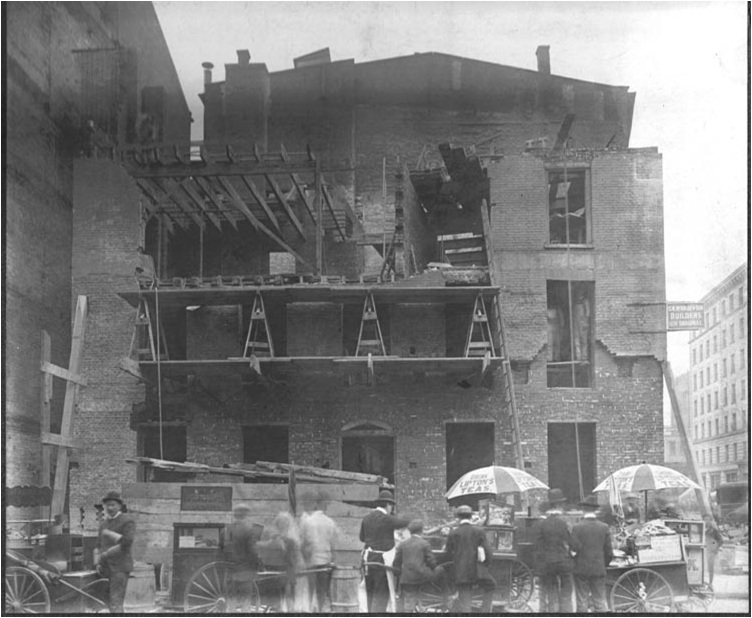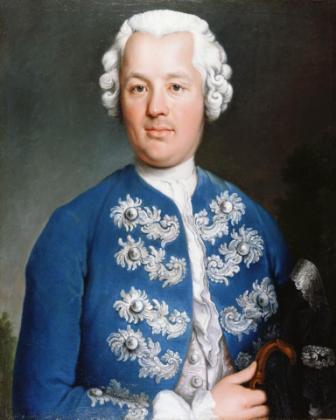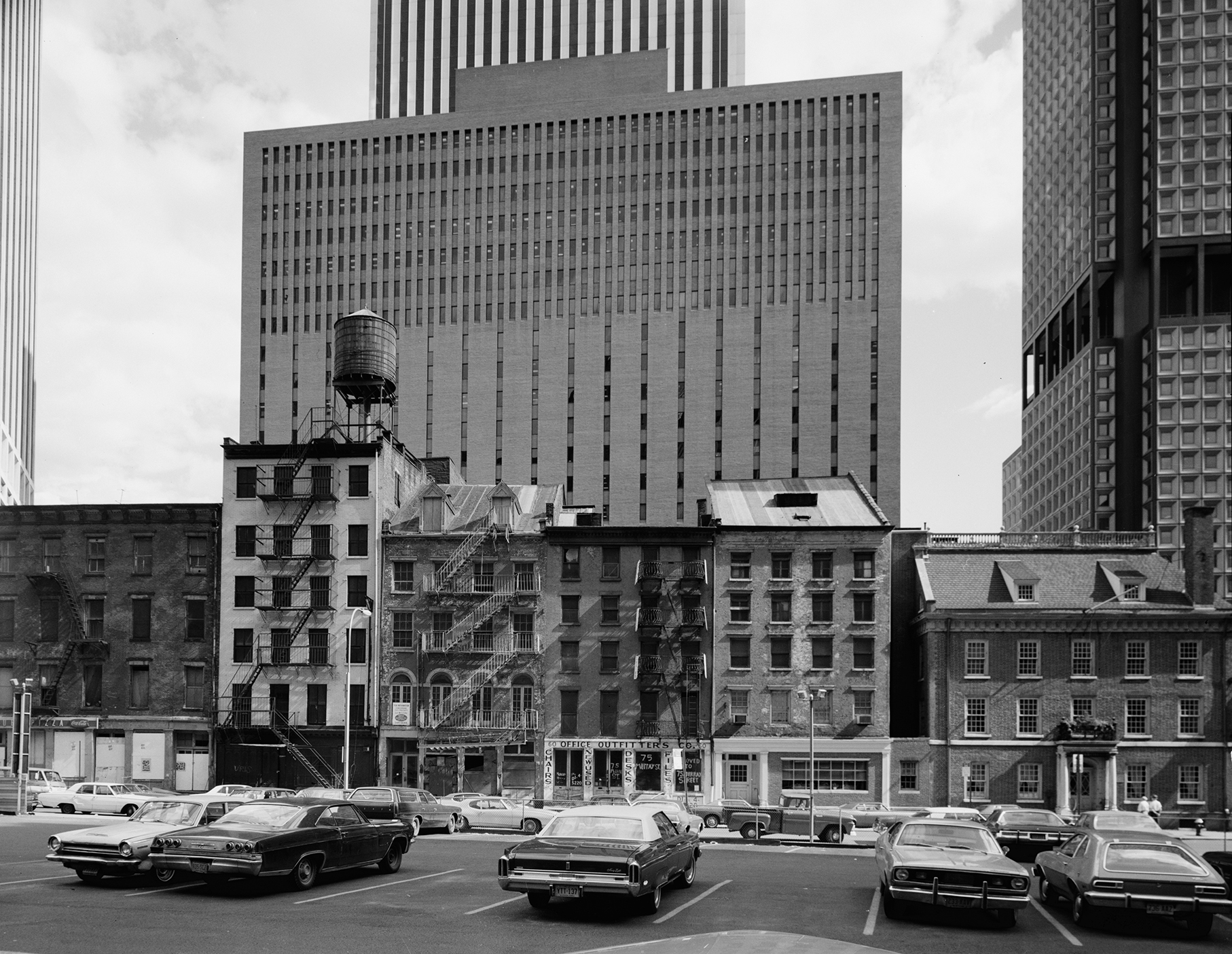P. Marlin January 2017

In one of the most historic sections of New York City sits the Fraunces Tavern, a local tavern and eatery in operation since 1762. The site of many historic events, the most famous being George Washington's farewell speech to his troops after the Revolutionary War, a visit today feels like a step back in time to colonial era New York (for a Fraunces Tavern Timeline visit 54 Pearl Street History). Excited about my first visit to the tavern, my husband and I made an early lunch reservation and were escorted into the historic dining room. I was about to have a meal at the same tavern where Alexander Hamilton and Aaron Burr ate a few days before their infamous duel two hundred and twelve years ago, I was pretty excited.
Perusing the dining room and taking as many photos as possible before the lunch crowd arrived, I tried to envision what it was like with a room full of early English, Dutch and other settlers, discussing politics, business, and life around a few tankards of ale. In contrast with the lovely, sophisticated atmophere of today, the environment at the tavern would have been quite different in the 18th century, a saw-dust covered floor, a musty room, and more than a few inebriated gentlemen whose boisterous behavior was the norm.
Unfortunately nothing from the original Fraunces Tavern building exists today. Having been through fires, rebuilt and added on to, the look of the original structure has been lost to time. When the Sons of the Revolution decided to restore the building to its original 1762 look in 1900, it was total conjecture, "based on a conglomeration of examples from the period and clearly influenced by the Colonial Revival Movement so popular at the time."1 3
 Fraunces Tavern, between the 1890 alteration and the 1900 restoration. Fraunces Tavern Museum Website.
Fraunces Tavern, between the 1890 alteration and the 1900 restoration. Fraunces Tavern Museum Website.
 1906 restoration. Fraunces Tavern website
1906 restoration. Fraunces Tavern website
 The restored tavern was opened on December 4, 1907.
The restored tavern was opened on December 4, 1907.

 The Fraunces Tavern in 2016. Notice the red brick on one side, representing the English, and the yellow on the other side,
representing the Dutch.
The Fraunces Tavern in 2016. Notice the red brick on one side, representing the English, and the yellow on the other side,
representing the Dutch.

The following history is taken from the Fraunces Tavern Museum website:
"The land on which Fraunces Tavern stands was occupied by water until the end of the 1600s. By the last decade of the 17th century, New York City was rapidly growing into a leading colonial port. With its naturally protected harbor and its open, multi-ethnic population devoted to commerce, such growth was unstoppable. In order to raise funds for a new market house and ferry building, the city sold lots created by filling in part of the Great Dock along Pearl Street in 1691. The new block also protected the city hall on the north side of the street from high tide flooding.
The plot of land that is 54 Pearl Street (landfilled water lot) was purchased from the city by Stephanus Van Cortlandt in 1686. Van Cortlandt was the son of the wealthy and well positioned Olaff Stevenson Van Cortlandt, who immigrated to New Amsterdam (Dutch New York) in 1638.
Stephanus Van Cortlandt’s daughter, Ann married a young upcoming French Huguenot merchant, Stephen (Etienne) De Lancey in 1700. That same year De Lancey purchased the 54 Pearl Street lot from his father-in-law.
In 1719, De Lancey applied to the Common Council for three and a half more feet to be added to his plot of land on the northwest corner where he planned to build “a large brick house.” It is believed that sometime between 1719 and 1722 De Lancey built a house on the property. The house was probably three stories and constructed with brick with a tile with lead roof. It is unclear if the De Lanceys ever lived it in or used it as a rental property."2
In more recent history, a bomb planted at the tavern exploded on January 24, 1975, killing four people and injuring more than 40 others.4

Samuel Fraunces was first documented in 1755 as a 'freeman' and a designated 'innholder' in the City register of freemen. In 1758 Fraunces operated the Free Mason's Arms, located on Broadway. In 1762, he mortgaged the Free Mason's Arms and used the money to purchase a large brick house on 54 Pearl Street. He purchased the home from the original builder, Stephen Delancey who had built the house in 1719. Several months after the purchase, Fraunces opened the Sign of Queen Charlotte, named for the wife of King George III. It would soon be known as the Queen’s Head Tavern. Over the next centuries, the tavern would have other owners, but after the 1907 restoration, it was renamed the Fraunces Tavern Museum & Tavern.2
Presidential Chef and StewardIn 1787 Fraunces began work as Georges Washington's steward in the presidential home in New York City (3 Cherry Street) and held the position until February 1790. Fraunces left for a while but re-gained his old position a year later, serving at Washington's presidential home in Philadelphia. In re-hiring Fraunces, Washington reported that the former tavern owner was a superior steward, explaining that "besides being an excellent Cook" Fraunces knew "how to provide genteel Dinners . . . prepared the Desert, made the Cake." Fraunces remained in the position until June 1794 and passed away a year later in Philadelphia in 1795.6
Right: A photo of Samuel Fraunces from the Fraunces Tavern Museum Website.
Though Fraunces Tavern is the oldest building on the block (18th century) the buildings around it, bordered by Broad and Water Streets, survive from the early 19th century. The block, created entirely on landfill, was the first extension of the Manhattan shoreline for commercial purposes. This section of buildings was slated for demolition in 1974 but was preserved thanks to conservation efforts.3
 The Fraunces Historic block on the Pearl Street side (1970s?). Fraunces Tavern is far right.
The Fraunces Historic block on the Pearl Street side (1970s?). Fraunces Tavern is far right.
 A close up of two buildings from the block in the 1970s (?).
A close up of two buildings from the block in the 1970s (?).
 The same two buildings in 2016.
The same two buildings in 2016.
The following photos are of our lunch visit to the Tavern and the Museum.
 Fraunces Tavern sign.
Fraunces Tavern sign.
 Entrance into Fraunces Tavern.
Entrance into Fraunces Tavern.
 One of the dining rooms in Fraunces Tavern.
One of the dining rooms in Fraunces Tavern.




 Lunch is served.
Lunch is served.
 All by ourselves for a little while.
All by ourselves for a little while.

 Another dining room.
Another dining room.
The Fraunces Tavern Museum, located on the second and third floors of the building, showcases nine galleries, "The John Ward Dunsmore collection of painted scenes of the American revolution; the Elizabeth and Stanley DeForest Scott gallery of portraits of George Washington; the Long Room, the site of General George Washington’s famous farewell dinner; the Clinton Room, a recreation of a federalist style dining room; the McEntee Gallery, depicting the history of the Sons of the Revolution; the Davis Education Center (Flag Gallery); and a number of other galleries and spaces used for periodic exhibitions." 5
 A portrait of a young George Washington as we head up to the museum.
A portrait of a young George Washington as we head up to the museum.

 The Memoirs of Benjamin Tallmadge, a Continental Army Officer and manager of Washington's Secret Service.
The Memoirs of Benjamin Tallmadge, a Continental Army Officer and manager of Washington's Secret Service.
 A lock of George Washington's hair.
A lock of George Washington's hair.
 George Washington
George Washington
 The room where George Washinton gave his emotional farewell to his troops.
The room where George Washinton gave his emotional farewell to his troops.

 The Clinton Room Wallpaper was printed in 1838 and is one of only eleven remaining sets of its kind left today.
The Clinton Room Wallpaper was printed in 1838 and is one of only eleven remaining sets of its kind left today.
 A sash belonging to the Marquis de Lafayette, a young Frenchman who sailed from France in 1777 to join the Continental Army.
The sash was said to have bound a wound on his leg during the Battle of Brandywine in September 1777. Blood stains appear on the weave of the sash.
A sash belonging to the Marquis de Lafayette, a young Frenchman who sailed from France in 1777 to join the Continental Army.
The sash was said to have bound a wound on his leg during the Battle of Brandywine in September 1777. Blood stains appear on the weave of the sash.
 A letter written by Nathan Hale.
A letter written by Nathan Hale.
 Martha Washington's slipper.
Martha Washington's slipper.
3Landmarks Preservation Commission Fraunces Tavern Block Historic District Designation Report 1978.
4 Fraunces Tavern bombing kills four and injures more than 40 in 1975